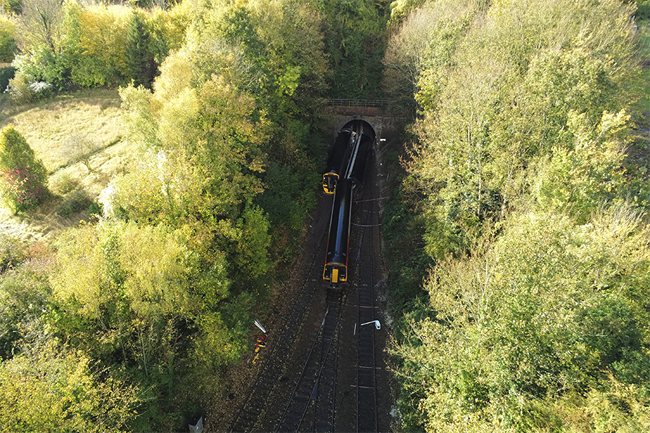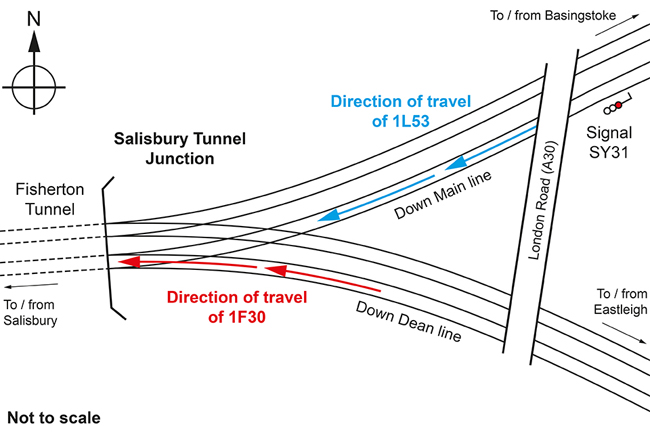South Western Railway (SWR) has praised its driver for helping prevent a more serious incident at Salisbury this week after it was revealed his train passed a red signal despite his efforts to slow and then stop its movement.
On Wednesday the Rail Accident Investigation Branch (RAIB) issued a new update into the crash near Salisbury on Sunday evening, when an SWR service from London Waterloo to Honiton, collided with the side of a Great Western Railway (GWR) service from Portsmouth to Bristol.
The impact caused the front two coaches of the SWR train (1L53 - the train's specific code) and the rear two coaches of the GWR train 1F30 to derail.
Both trains continued some distance into Fisherton tunnel. Thirteen passengers and one member of railway staff required hospital treatment, with significant damage to the trains and railway infrastructure involved.

Source: RAIB
The RAIB said its preliminary examination found that the movement of GWR train 1F30 across the junction was being protected from trains approaching on the Down Main line by a signal, which was at danger (red). Immediately before the collision, SWR train 1L53 had passed this signal by around 200 metres while it was at danger.
‘Preliminary analysis of data downloaded from the On Train Data Recorder (OTDR) fitted to train 1L53 shows that the driver initially applied service braking to slow the train on approach to the caution signal before signal SY31. Around 12 seconds after service braking started, the driver made an emergency brake demand. As the train approached signal SY31, and with the emergency brake still being demanded by the driver, a second emergency brake demand was made by the train protection and warning system (TPWS).
‘These emergency brake demands did not prevent the train from reaching the junction, where the collision occurred. OTDR analysis indicates that wheel slide was present both when the driver applied service braking and after emergency braking was demanded. This was almost certainly a result of low adhesion between the train’s wheels and the rails.’

Source: RAIB
SWR managing director Claire Mann said: ‘We welcome RAIB’s update on the scope and aims of its investigation. It is right that they look into all the possible causes of the lack of adhesion between the train and the track, and we are pleased their early assessment shows the South Western Railway driver reacted correctly to the signals by braking to slow the train down. We believe his actions went some way to preventing a much more serious incident and we wish him a speedy recovery.’
Register now for full access
Register just once to get unrestricted, real-time coverage of the issues and challenges facing UK transport and highways engineers.
Full website content includes the latest news, exclusive commentary from leading industry figures and detailed topical analysis of the highways, transportation, environment and place-shaping sectors.
Use the link below to register your details for full, free access.
Already a registered? Login